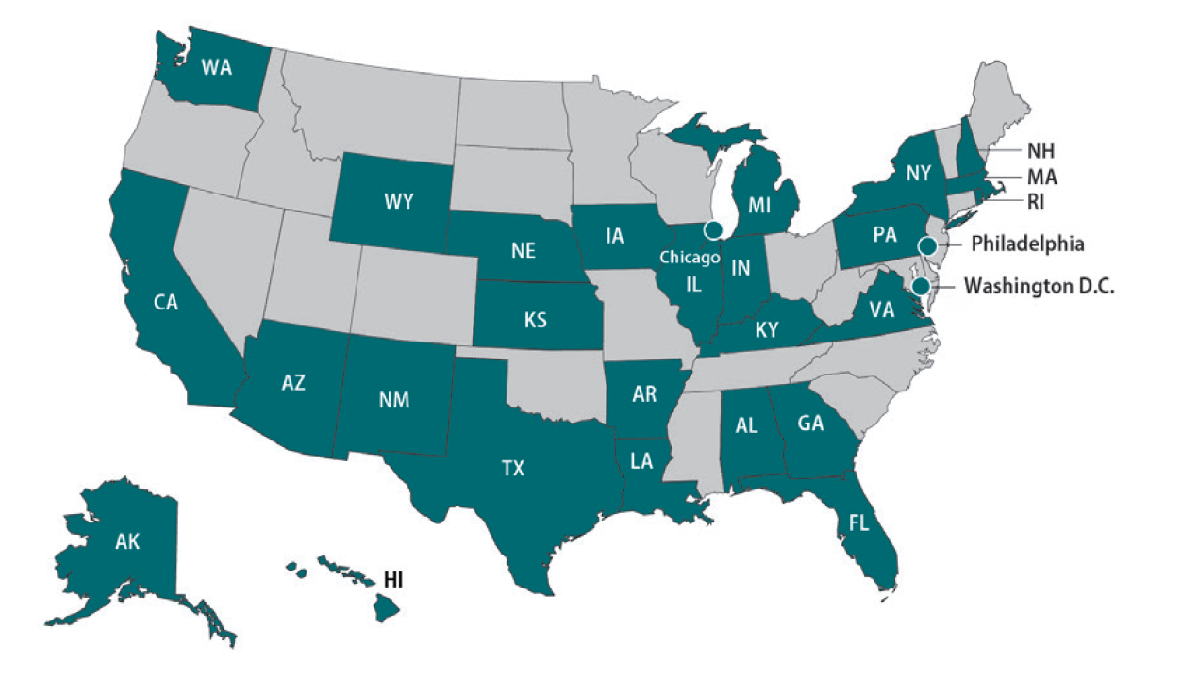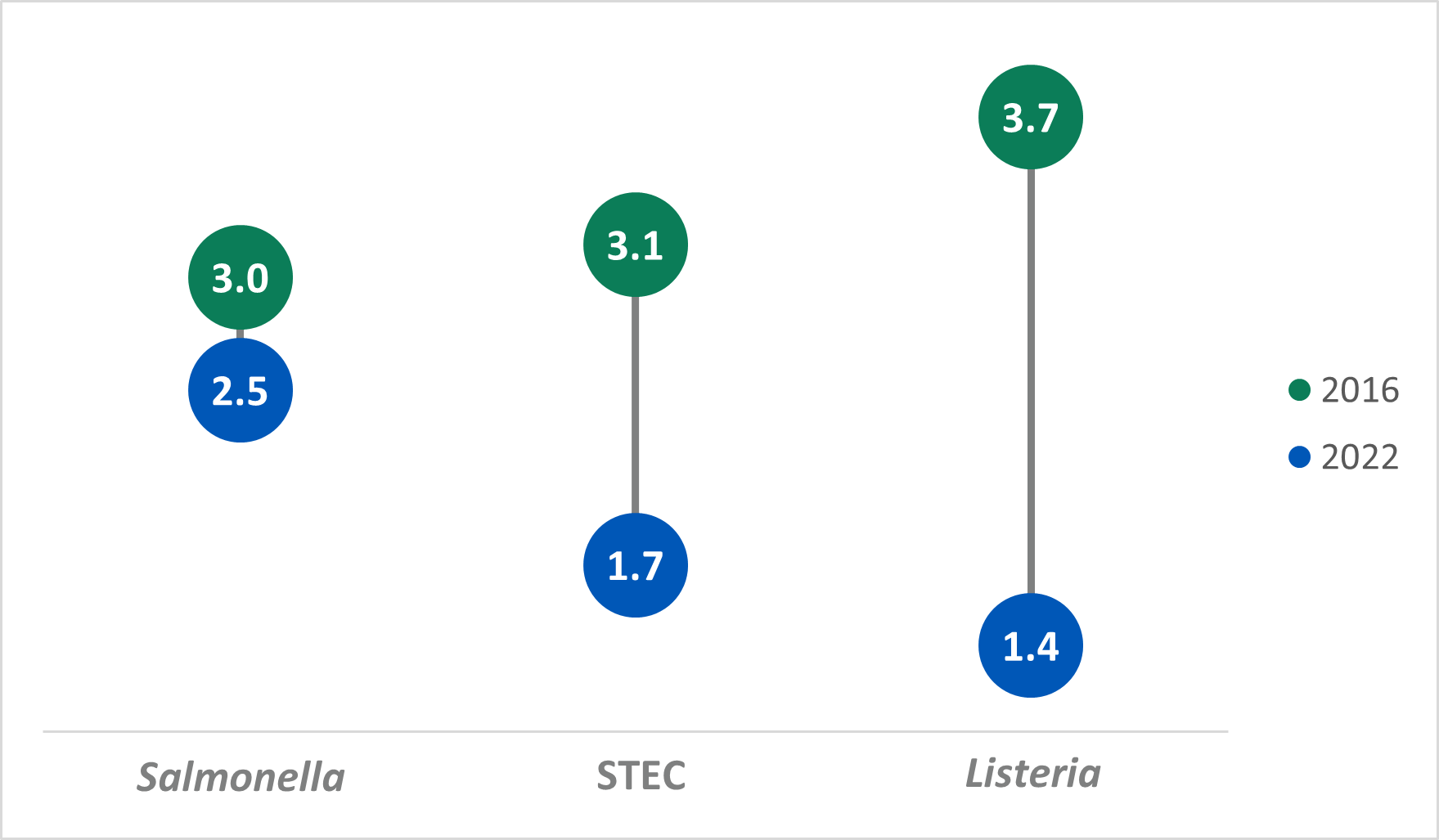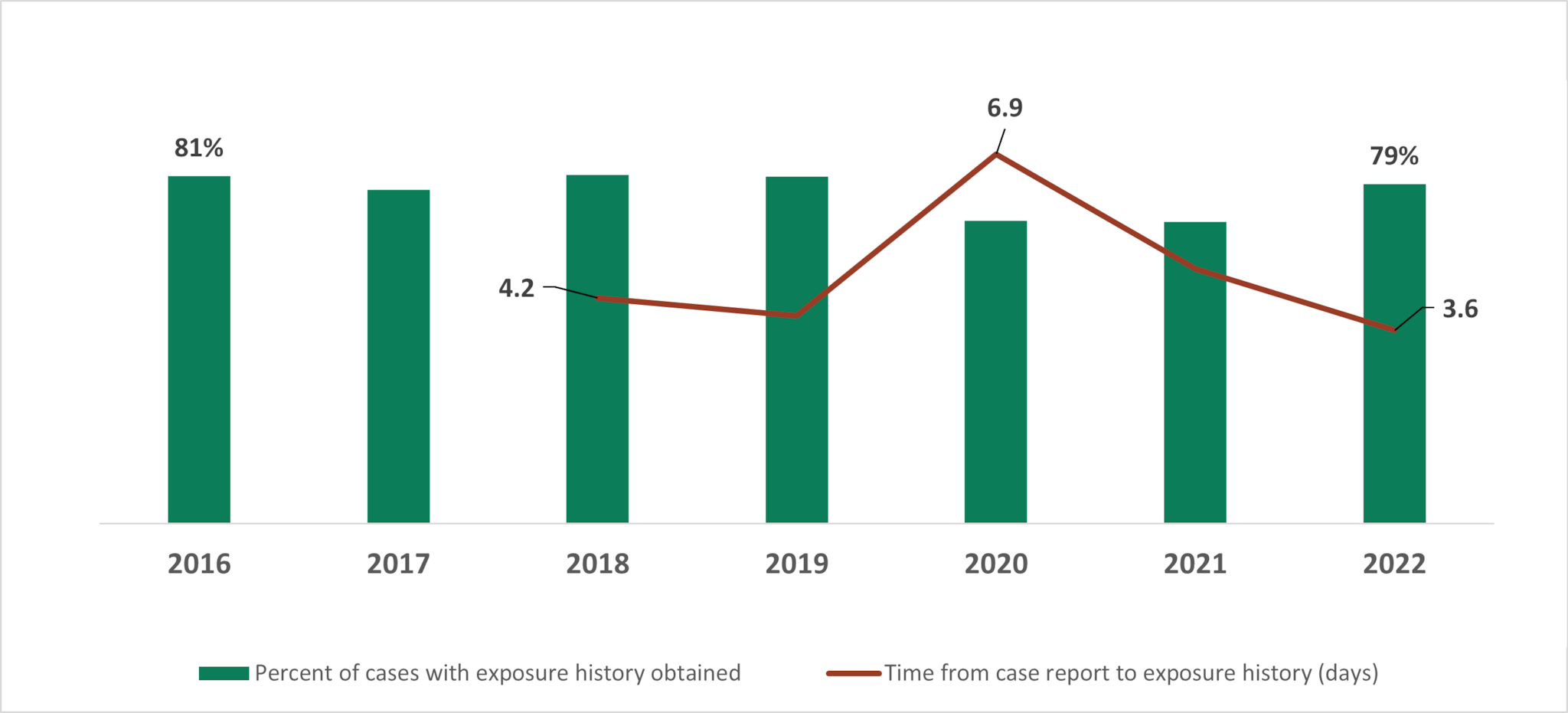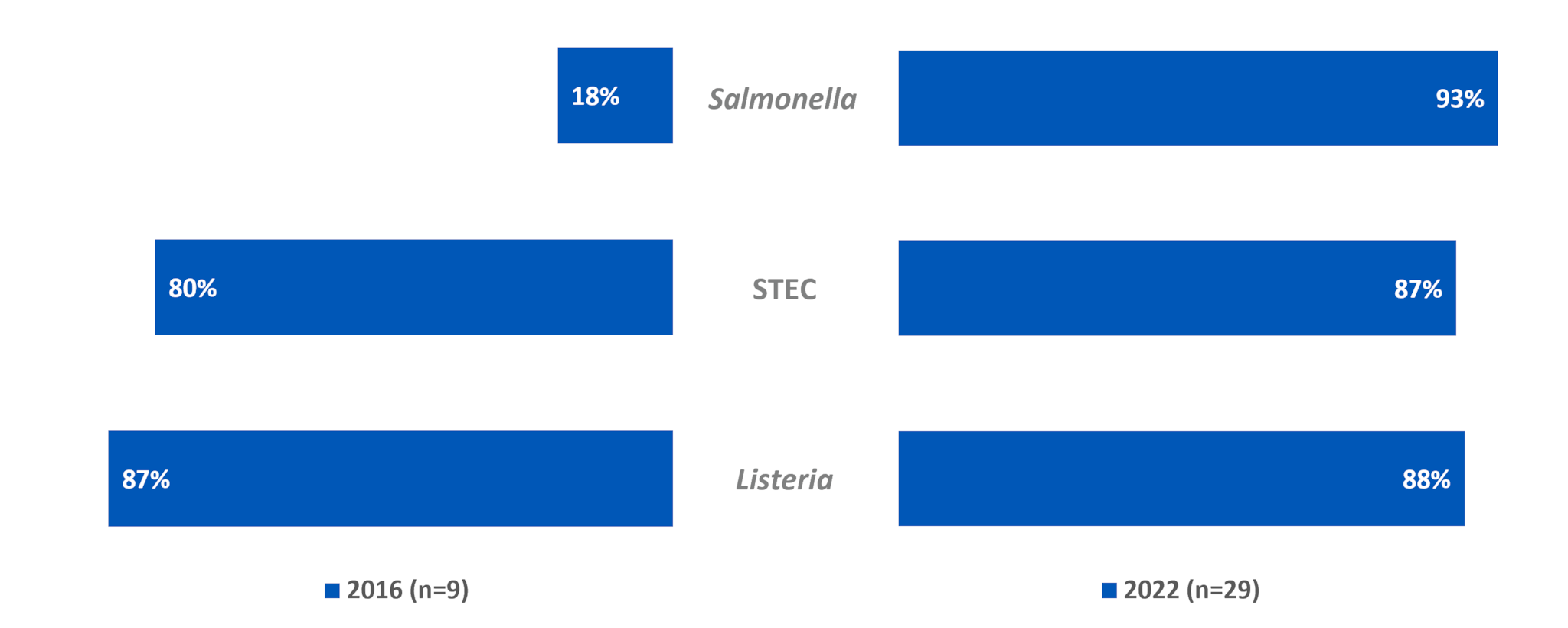What to know
OutbreakNet Enhanced (OBNE) is a Centers for Disease Control and Prevention (CDC) program that provides support to state and local health departments to improve their capacity to detect, investigate, control, and respond to enteric disease outbreaks. OBNE started in August 2015 with 11 sites. The program expanded and now comprises of 29 participating sites.

Highlights
In 2022, health departments transitioned towards their “new normal” after being substantially impacted by the COVID-19 pandemic since 2020. Many OBNE projects and activities were resumed after being paused or scaled back for multiple years. As OBNE staff resumed normal duties, they faced new challenges such as training a new and returning workforce.
OBNE sites partnered with Integrated Food Safety Centers of Excellence (Food Safety CoEs) on projects and trainings. OBNE sites were also able to showcase their annual work and provide updates at national meetings and conferences. This included the Council of State and Territorial Epidemiologists (CSTE) Conference and the Integrated Foodborne Outbreak Response and Management (InFORM) Conference. Additionally, OBNE sites shared their accomplishments with each other during monthly conference calls to learn and share successful strategies. Program activities were also shared through success stories that were published to the OBNE website.
Program performance
OBNE performance metrics have been collected since 2016 to document the burden, timeliness, and completeness of enteric disease outbreak activities. Sites report metrics annually on both laboratory and epidemiologic aspects of outbreak investigations. Metrics are reported for Salmonella, Shiga toxin-producing Escherichia coli (STEC), and Listeria (SSL metrics), and optionally for Shigella and Campylobacter. The metrics are revised as needed to best meet program needs.
Select 2022 metrics for Salmonella, STEC, and Listeria (SSL)
- Over 47,000 cases reported
- Over 1,100 clusters detected
- Attempted interviews with an average of 93% of cases
From 2016 to 2022, OBNE sites decreased the number of days from case report to initial interview attempt for SSL cases.
In 2022, OBNE sites conducted routine interviews of cases in 95% of cluster and outbreak investigations.

From 2016 to 2022, OBNE sites maintained the percent of cases with exposure history obtained. Additionally, sites documented a return to pre-COVID turnaround times for obtaining an exposure history, from 6.9 days in 2020 to 3.6 days in 2022.A

From 2016 to 2022, OBNE sites increased the percentage of Salmonella and STEC primary isolates with WGS testing and maintained testing for Listeria.

- Reporting for this metric began in 2018.
